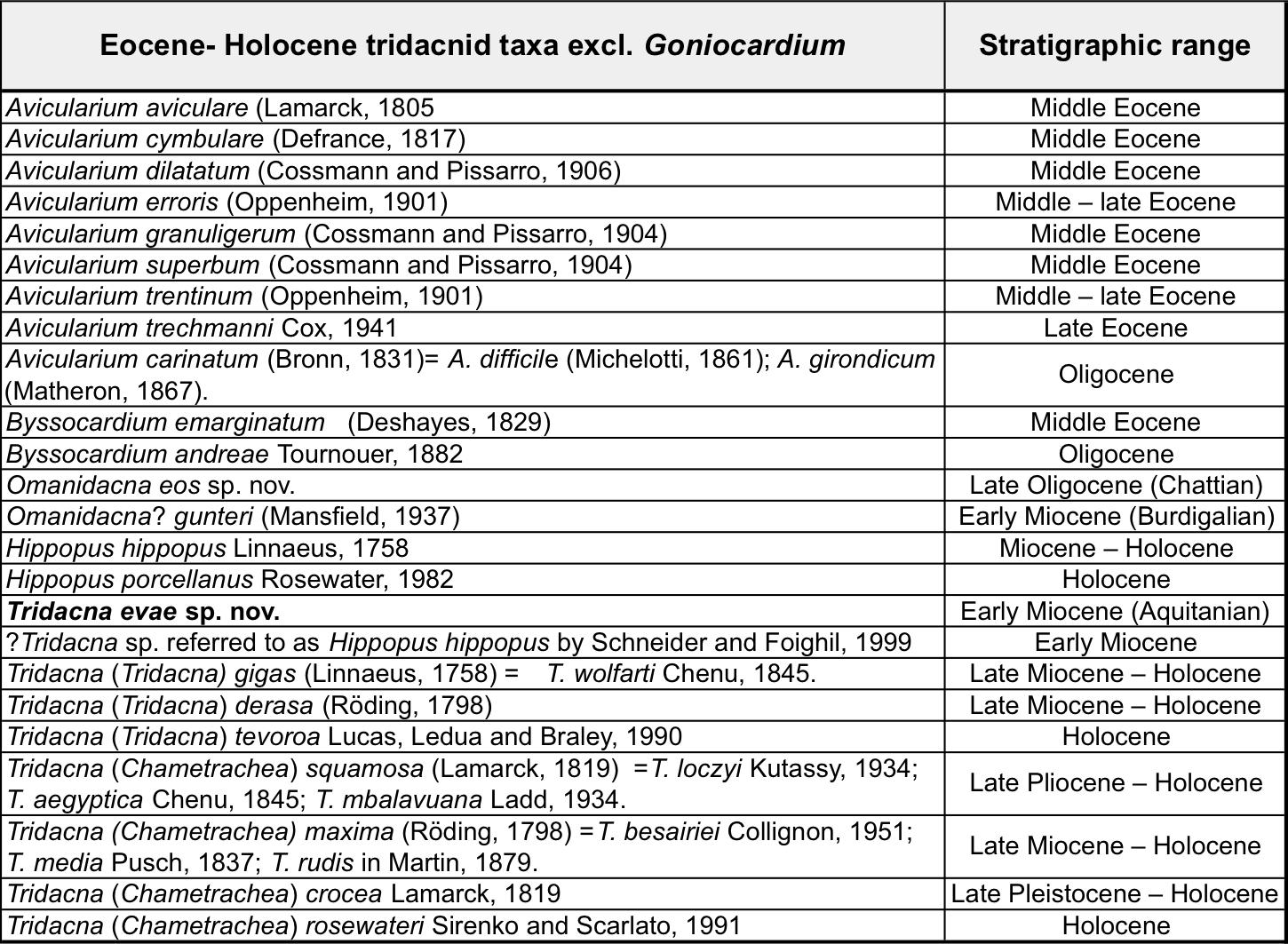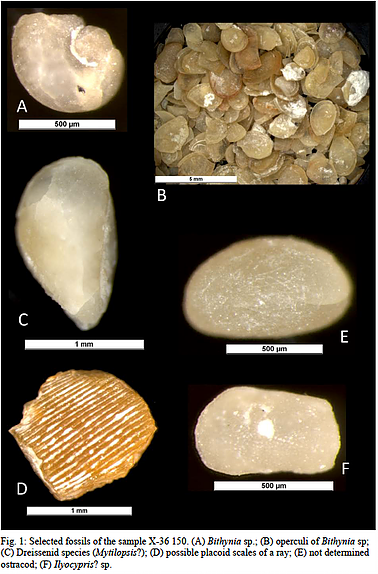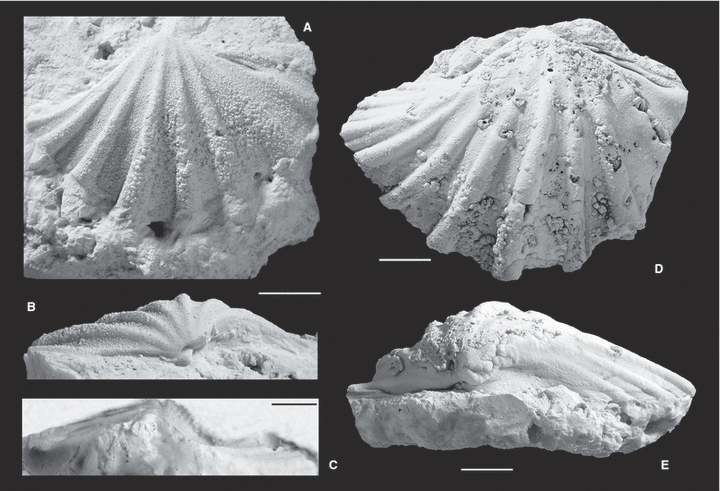Mollusk and gastropods biostratigraphy
Semi-quantitatives analyses, from Cenozoic, everywhere in the world.
High-quality biostratigraphic and paleoenvironments interpretations.
Interpretation of recorded species is based on the global and/or regional biostratigraphic charts.
CASE STUDY
China – Miocene
Description of fossil content
A single and incomplete juvenile shell of the gastropod Bithynia is present (Fig. 1A). It has the characteristic large and smooth protoconch of this genus. Bithynia is furthermore evidenced by numerous operculi with concentric growth pattern (Fig. 1B).
Additionally, a single and very small doublet of a possible Dreissenid (Bivalvia) is present (Fig. 1C). It could be Mytilopsis, but this is uncertain because of the small size.
The ostracod species shown in Fig. 1E is not rare, while only a single specimen of the ostracod shown in Fig. 1F could be found. This specimen resembles a bit the genus Ilyocypris. Further few fragments could be the placoid scales of a ray (Batoidea) (Fig. 1D).
Facies interpretation
The environment was lacustrine to slightly brackish. Unfavourable conditions are indicated by the low species diversity of the gastropods and ostracods. However, all fossils are either originally calcitic (operculi) or recrystallized (ostracods). It is possible that further gastropods are not preserved because their aragonitic shells have been dissolved.
Stratigraphy
Most likely this sample is of Miocene age or younger. Very similar operculi of Bithynia are mainly abundant in the latest early Miocene and also in the middle Miocene of Europe (Paratethys region).
FOSSIL AND RECENT TRIDACNINES
synonymies of fossil taxa and stratigraphic range
Tridacna evae Harzhauser and Mandic sp. nov.
scale bars represent 10 mm.
Fossil and recent tridacnines with synonymies of fossil taxa and stratigraphic ranges (excluding Goniocardium).

Reference
Harzhauser M., Mandic O., Piller W.E., Reuter M. Kroh A., 2008. Tracking back the origin of the into-pacific mollusk fauna: basal Tridacninae from the Oligocene and Miocene of the Sultant of Oman. Palaeontology, 51(1), 199–213.

